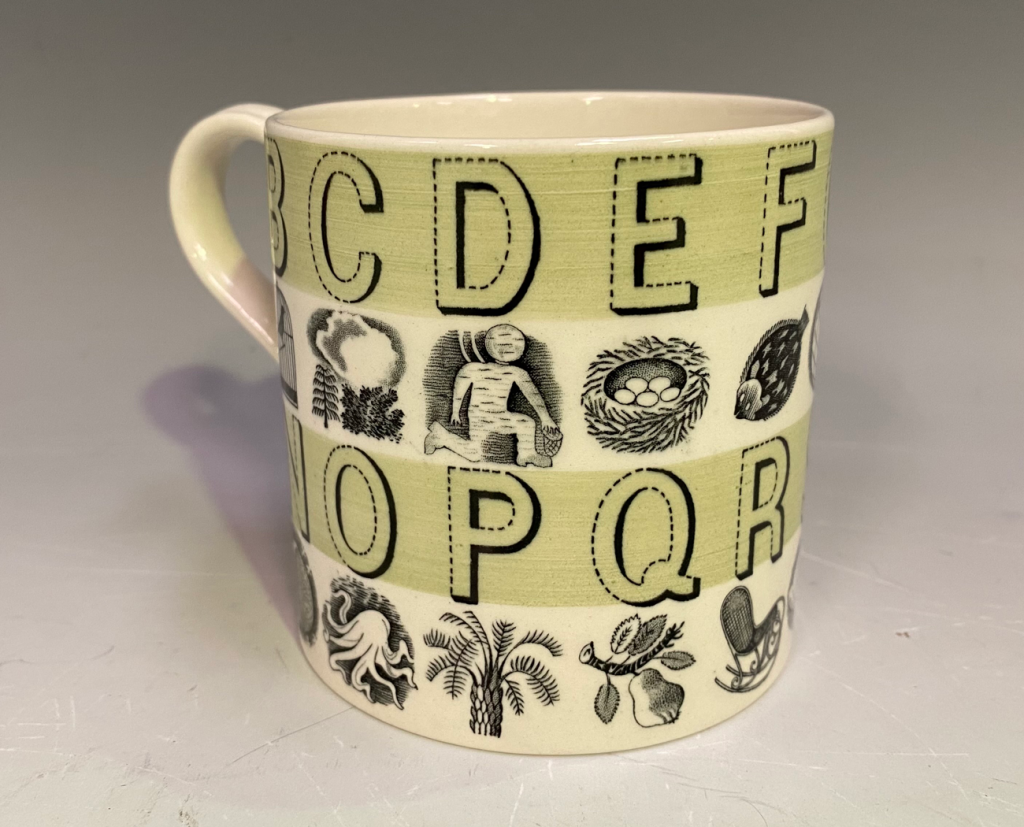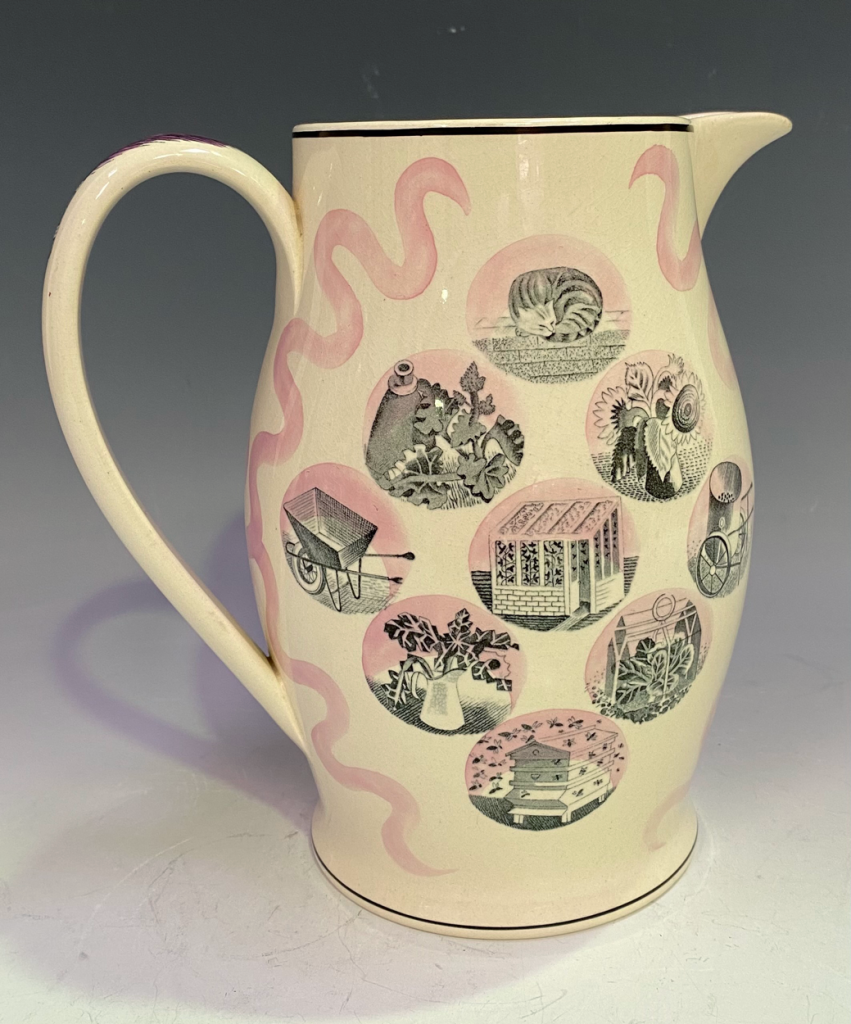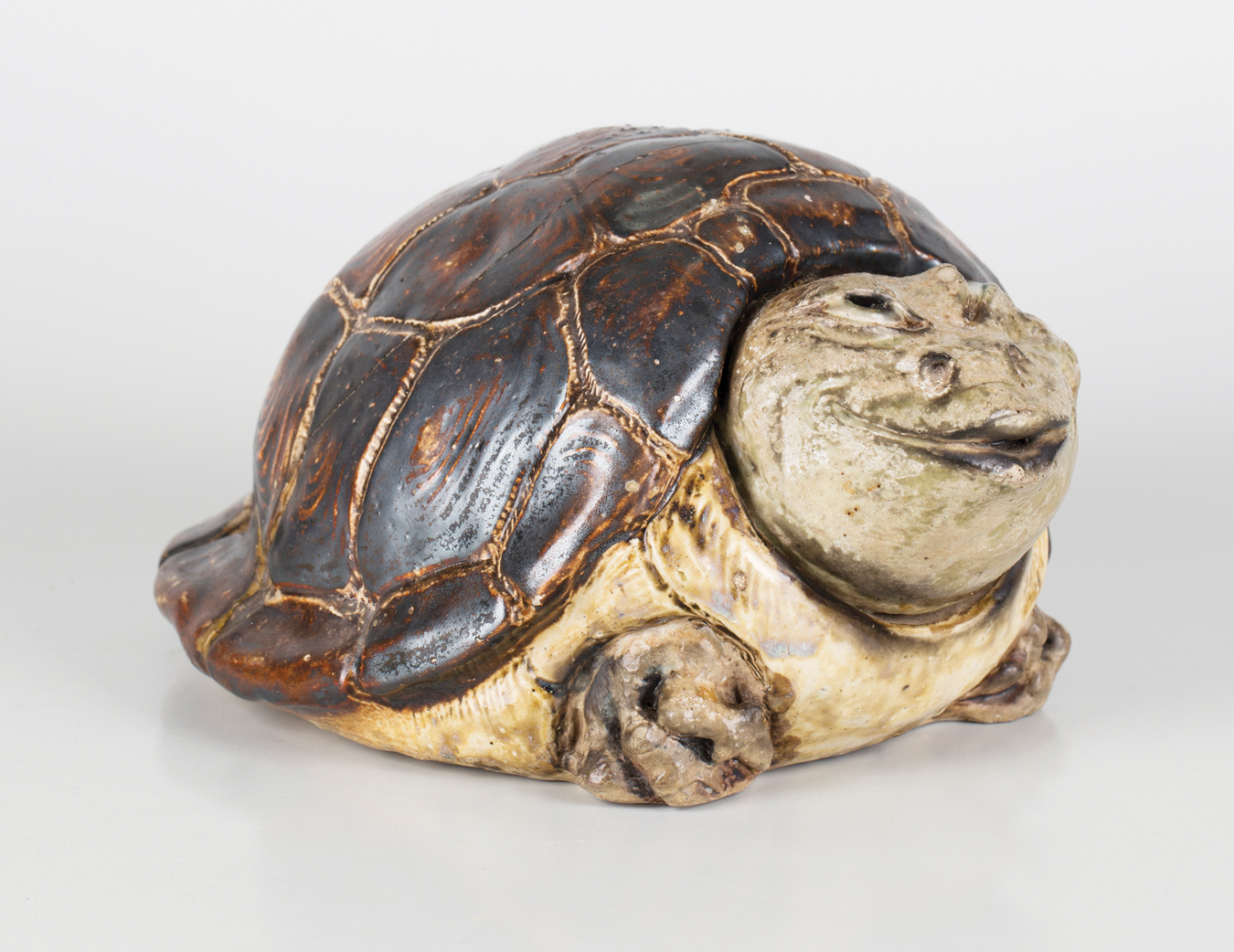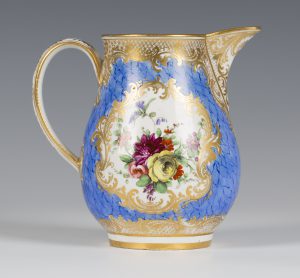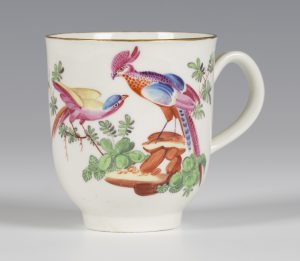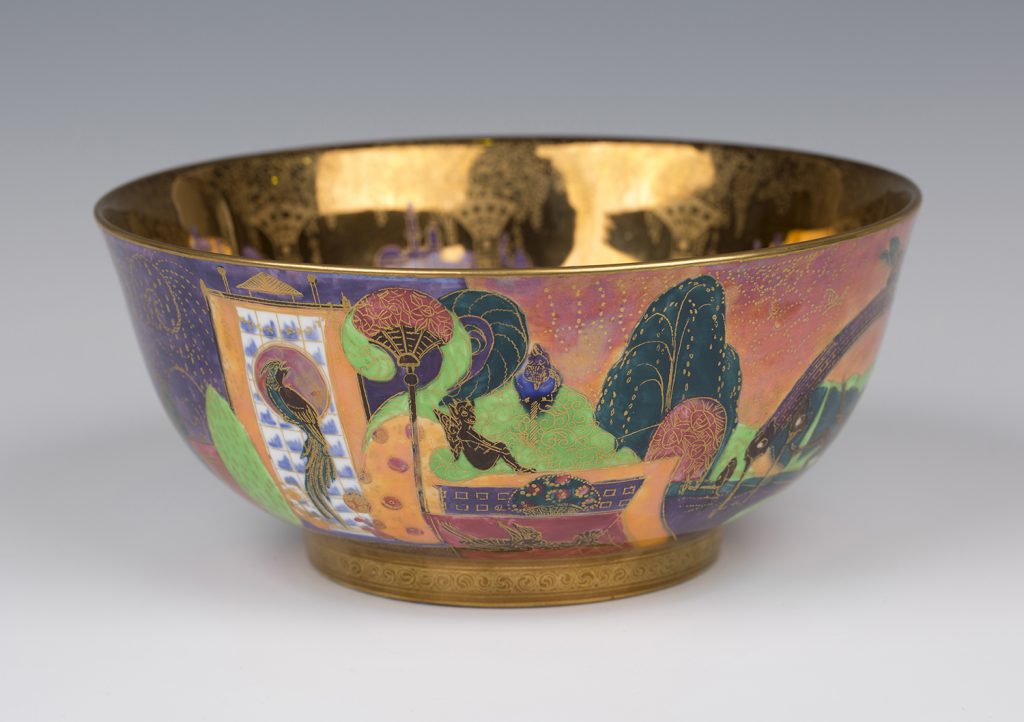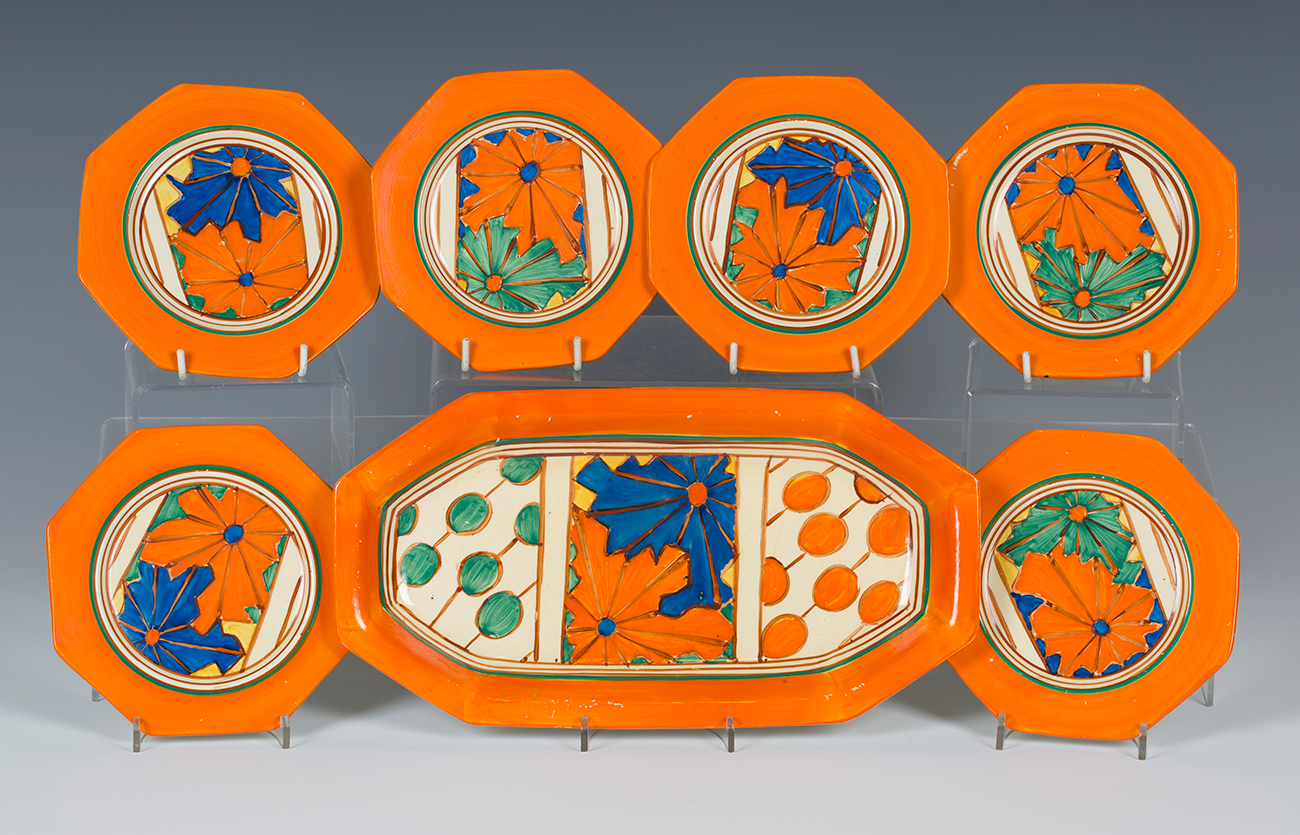
This week we are returning to the story of Clarice Cliff, one of the most influential women designers and industrialists of the 20th century. Born in 1899 she grew up in Tunstall. Her father worked in an iron foundry whilst her mother took in washing.
When she was thirteen Clarice Cliff started working in the pottery industry as a gilder and studied art and sculpture at the Burslem School of Art. Clarice Cliff’s talent was acknowledged by Newport pottery and A J Wilkinson who gave her a studio in 1927. It was here that she began to paint her free hand patterns employing on-glaze enamels which were much brighter than underglaze colours. Her wares were immediately popular. She called her work Bizarre and ‘The Bizarre by Clarice Cliff’ stamp was used between 1928 and 1936.
In 1930, Clarice Cliff, with talent and determination rose to the position of art director of the Newport pottery and A J Wilkinson
Despite the financial pressures of the Great Depression and the high price of her wares Clarice Cliff‘s Bizarre ware continued to sell in volume across the world in leading department stores. Her ability to model allowed her to embrace the modern influences from Europe.
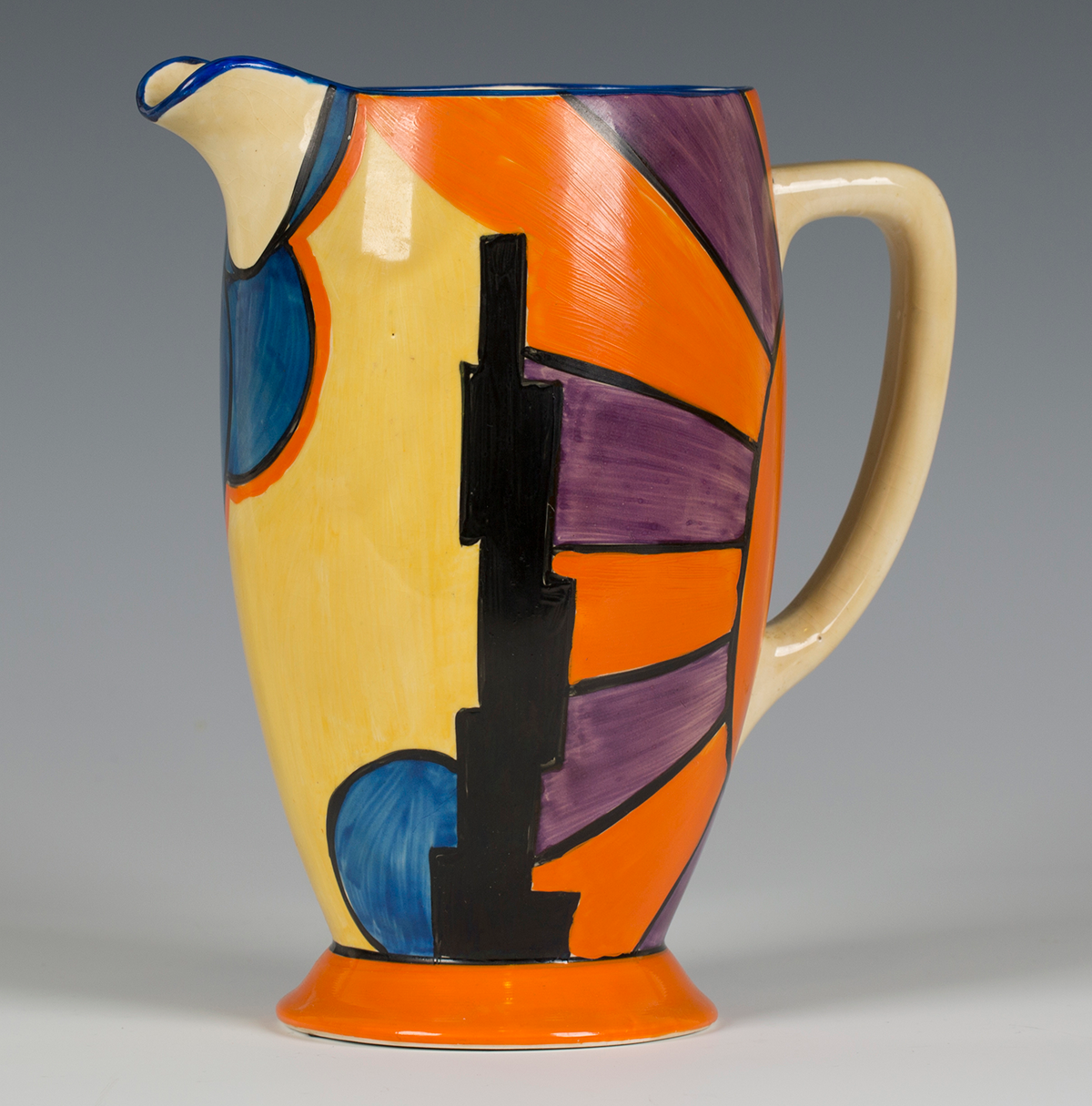
Clarice Cliff had a strong interest in modern art and her modernist designs were influenced by Cubists like Henri Matisse, De Stijl, Sonia Delauney and the French design firm La Maison Desny. She collaborated with many contemporary artists including Dame Laura Knight, adapting their paintings for her pottery.
These bold new artistic styles informed her colourful cubist landscape designs. The Bizarre Sunray pattern jug is typical of Clarice Cliff during this period. It dates from around 1930. The abstract landscape design is based on a New York skyline and features a bold black skyscraper. It realised £500 at Tooveys.
The vibrant, exquisitely conceived Clarice Cliff Fantasque Umbrellas and Rain pattern sandwich set from 1930 brings together the influences of modernist art and the art deco. It was sold for £700 at Tooveys.
The first retrospective of Clarice Cliff’s work was held at the Brighton Museum and Art Gallery in 1972. Today, women artists and designers are being reassessed as the often overlooked stories of these important women artists, designers and entrepreneurs in the 20th century are reclaimed.
If you would like advice on collecting or acquiring Clarice Cliff Bizarre ware contact Toovey’s specialist Jo Hardy by telephoning 01903 891955 or emailing auctions@tooveys.com.

